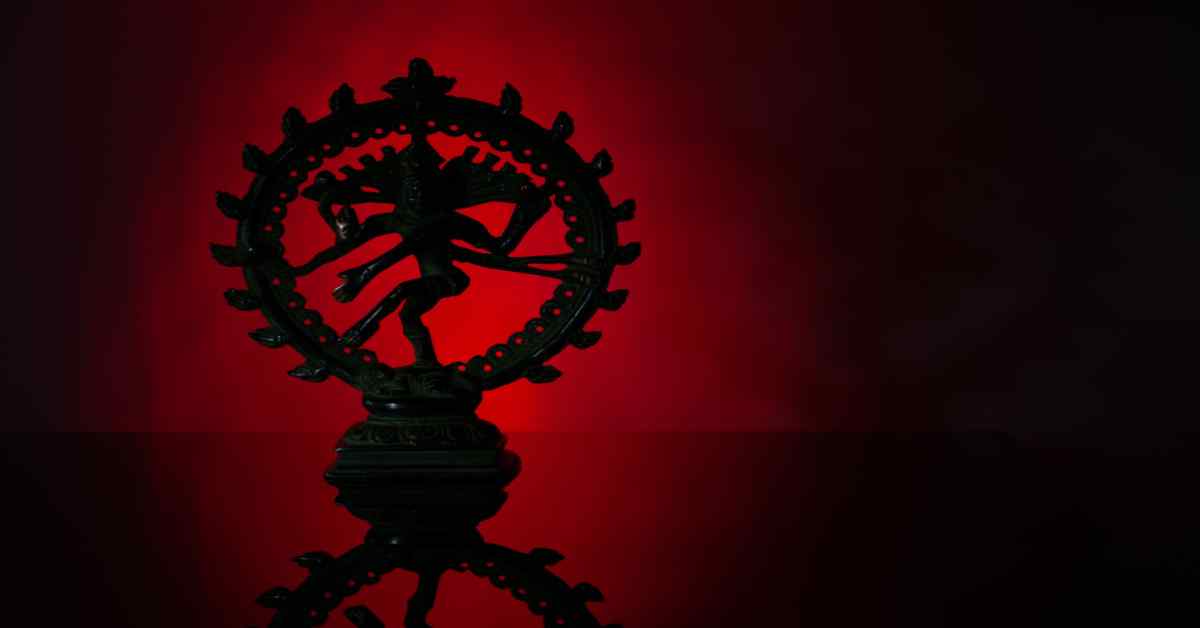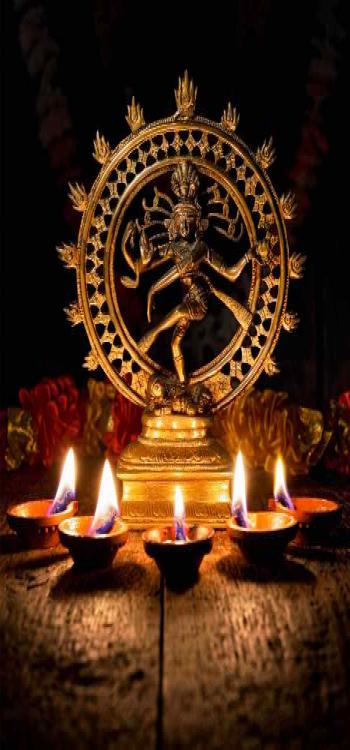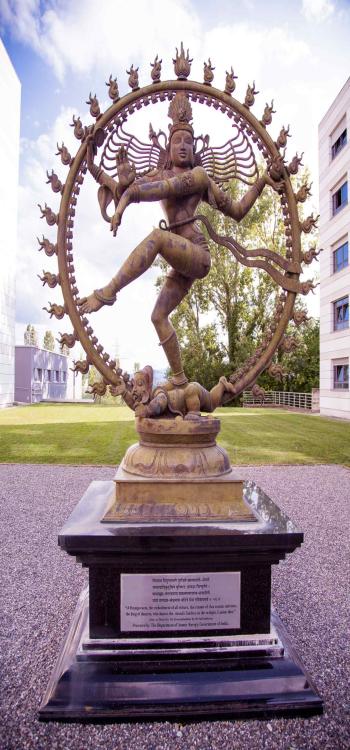Overview of Placing A Natraja Statue At Home
We regularly hear that trying to keep a Nataraja statue at home leads to family conflicts, aggressive outbursts, and bad energy that only goes away after the statue is removed. We’ve also heard that many temples take donations of figurines, some of which are a year old and others which appear to be nearly brand new. What exactly is it about this cosmic destroyer that terrifies people into looking for a home for him somewhere far from their own? But why do traditional performers across the world revere the Lord? And why does this Hindu god have a permanent home between buildings 39 and 40 at the Conseil Européen pour la Recherche Nucléaire (CERN), also known as the European Council for Nuclear Research? In his book “The Tao of Physics,” physicist Fritjof Capra explains that “The Dance of Shiva signifies the basis of all creation. Shiva also serves as a reminder that the world’s many forms are illusory and constantly changing rather than fundamental. Modern physics has demonstrated that the rhythm of formation and fragmentation is present in both organic and inorganic matter, as well as in the yearly cycle of the seasons and the birth and death of all living things.

Things we covered for you
You see, the same coin has two sides. a wonderful fusion of art, science, and religion. It’s wonderful, isn’t it? Shiva is among Hinduism’s most respected deities, if not it’s most revered. He appears in almost all myths and fables and inhabits every house in the east. However, there are some guidelines for bringing this destructive god into your life. Here are a few Vastu placement suggestions for a Nataraja statue at home.
Nataraja Statue At Home: 10 Tips For Utilising The Cosmic Dancer’s Elements

Even today, Lord Nataraja is represented by an image that is similar to a coin: a single object with two facets. He is revered and idolised for his godly dance form, but he is also revered for his ability to control the destructive force it unleashes. The Tandav, a cosmological dance performed either in a pleasing state or inexorable wrath, is frequently portrayed as being performed by Lord Nataraja in a fierce form.
Read: South Facing House Vastu That Benefits Your Home
One of the few heavenly understandings that hasn’t undergone much change over time is Nataraja. The Unmai Vilakkam, Mummani Kovai, Tirukuttu Darshana, and Tiruvatavurar Puranam are just a few of the many texts on which the many interpretations of the Lord’s symbolism are based.
- In the centre of the Prabha Mandala, a concentric circle of flames is the Nataraja. The eternal cosmic fire that both creates and consumes everything in existence is symbolised by this circle. Two Makaras on either end of the ring of fire raise it.
- The Lord’s bowed legs perfectly capture his vivacious dance, and his long hair fans out behind his head.
- The divine Ganges, which is held in the Lord’s matted hair on the right side of the forehead, pours out to support the life around her waters.
- A human skull representing mortality, a crescent moon, and the Datura flower is depicted on his crown.
- The Lord is typically represented as having four arms, but some interpretations of him also include ten arms.
- He can be seen holding the Damaru in his upper right hand; this divine instrument, connected to rhythm and time, is shaken while he dances.
- In his left upper hand, he is holding Agni, the flame of creation and destruction.
- His lower right hand slithers with a cobra, and his palm displays the Abhaya mudra, which is thought to symbolise bravery in the face of evil.
- The third eye on the forehead help to define the Lord’s face. The first eye stands for the sun, the second for the moon, and the third for the knowledge one discovers when in search of inner wisdom and self-realization.
- The Lord is depicted dancing on Apasmara’s head, a dwarf demon who represents ignorance and evil and whom the cosmic dance triumphs over. Apasmara should never be killed; instead, he should be subdued because his presence maintains the equilibrium between spiritual knowledge and ignorance. If he were to die, knowledge would become more accessible in all forms, which would diminish its value.
Tips To Strengthen Divine Connection With Shiva

A deep connection with the Divine can be felt on four levels.
Read: How to Remove Negative Energy from Your Home: Effective Techniques
- Saamipya
It means experiencing a strong sense of closeness and value to the Divine. When will you finally have this experience? Will you experience this intimacy today, tomorrow, in ten days, or in a few months? No! Feel as though you are right now, in this particular moment, very near to the Divine. The work of a Guru is this. A guru can facilitate this sense of intimacy with the Divine.
- Saanidhi
Saanidhya is Sanskrit for invoking or sensing the Divine. You become conscious of the Divine’s existence and feel its presence when you meditate.
For instance, although the air surrounds us constantly, we are not always aware of it. You become aware of the air’s presence when you take a deep breath. In a similar way, even though God is always surrounding us, we do not perceive His presence. We perform yajnas, and pujas, and observe various festivals to feel the Divine’s presence.
- Saarupya
Saarupya means recognising the Divine in everyone and everything. To feel as though “the Divine is in me, and I am the Divine” is what it means. Realizing the Divine’s presence in my form and in every form I see around me. The Divine is everywhere, even though it has no form.
Read: Vastu for Windows: A Comprehensive Guide for Homeowners
- Saayuja
Saayujya, which means feeling completely at one with the Divine and seeing no distinction between you and the Divine, is the highest state. The only thing present in this state is One; there are no two (or dualities). Only when you are completely at one with the Divine and in profound silence, in the serenity of your Being, can you experience this unification.
5 Things To Keep In Mind While Getting A Natraja Statue For Home

Here are some important things you should keep in mind before getting a dancing Shiva statue:
1) Keep in mind the symbolism and significance
Shiva is unquestionably one of Hinduism’s most profound and deep gods, and each of his forms is loaded with potent symbolism. For many Indian devotees, he is the god of both creation and destruction, and he stands for the dual nature of life.
2) A statue of Nataraj in the house
Most people are unaware that Shiva should be placed in particular locations to amplify the vibration he emits. The northeast area of the home is the ideal location for Shivling idols, according to Vastu, the Ayurvedic science of architecture. As it is known as the Ishan corner, this is also the ideal spot to set up the pooja room (meditation spot). The perfect location for a Shiva statue is on a sacred table, but it can also be placed anywhere that won’t have anything too close to it. Avoid placing the statue underneath anything, such as a clothesline, or close to the end of a bed. Shiva, in contrast to Ganesha, really doesn’t belong in a career because of his excessively high energy.
Read: South East Facing House Vastu – Make Your Home Vastu Shastra Friendly
3) Statue of sitting Shiva versus dancing Shiva
The energy of a Shiva who is meditating is naturally calmer than the energy of a Shiva who is dancing—after all, it is the dance of creation! Keep this in mind when deciding where to place your Shiva statue at home because you want something that amplifies your energy. A high-energy personality, for example, really doesn’t need any more of that kind of energy and should instead get the kind that comes from meditation, and vice versa.
4) One Is Enough
Keep only one Lord Shiva statue idol on your altar at all times. Having multiple Shiva idols in your home will balance them. For it to work, all you need is one!
5) Shiva Worship Methods
- Make a habit of praying to Shiva every dayin the morning and the evening at home.
- As an offering, light some incense sticks next to the statue. Say “Namah Shiva” aloud several times.
- It is common practice to offer milk or any confection made from milk to the Lord on Mondays. If you don’t like that, just spend more time in meditation in the vicinity of your altar.
- Prior to praying to Lord Shiva, always honour Lord Ganesha. He has a responsibility to remove any impediments to prayer and its blessings.
Get The Best Nataraja Statue With NoBroker
Now that you are aware of how to place a Nataraja statue at home, you can get it for your household too. Just keep in mind the basic Vastu guidelines for placing a Nataraja statue at home and praying to it and you are good to go. However, Vastu Shastra can be complicated and have contrasting guidelines if not read carefully. It’s always a better choice to take professional help from Vastu experts when deciding on such important matters. Connect with the Vastu experts at NoBroker and you can have all your Vastu-related queries resolved within minutes.
FAQ’s
Ans. The Lord either dances the Tandav, his cosmic dance, in utter joy or ferocious wrath. Looking at the Lord’s features allows you to make this determination in the quickest and most accurate manner possible. If he is wrath or joy, choose wisely.
Ans. You can place the Nataraja Statue in your home’s Ishanya quadrant, which is located in the northeast corner.
Ans. Yes, you can put the Shiva statue in your home as long as it depicts Lord Shiva in a joyful, smiling position.
Ans. The Akasa Lingam in the Chidambaram temple devoted to this idea symbolises the subtlest space, whose significance is sound, out of the five elements. Lord Nataraja represents both the ascension from the grossest as an act of dissociation and the descent from the subtlest as a creative act.
Ans. The Indian government selected this deity due to a comparison between Nataraj’s cosmic dance and contemporary research on the “cosmic dance” of subatomic particles. India is one of the associate member nations of CERN.













